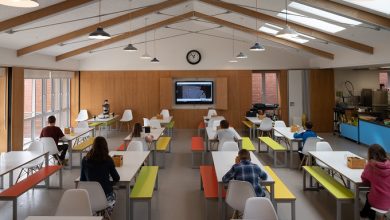Op-Ed: A scientist’s dos and don’ts for safer air in schools
As we reoccupy populated school grounds and have entered into the chillier months of cold and flu season, providing a safe and hygienic space for your children, teachers, and parents has never been more important.

There are many pollutants that may negatively impact the air quality indoors, even in places we perceive as typically ‘clean’ like a school environment.
As we can’t physically see poor air quality, its importance is often unknown or not regulated. Safe Work Australia states that workplaces should consider ventilation in risk assessments, monitor indoor air quality and regularly review the effectiveness of all control measures to eliminate or minimise health and safety risks. It would seem reasonable that we should expect to keep up to speed to provide clean air in crowded classrooms.
It can often become a difficult task to employ these safe practices for quality air control, with many environments offering minimal or even no natural ventilation options. However, technology has graced us with the innovation of air purifiers. Those which are correctly fitted with the appropriate high-efficiency particulate air (HEPA) filters can lower the concentration of airborne particles (including those containing viruses). Air purifiers can be useful additions in areas with poor ventilation when reducing the transmission of airborne infections.
The first steps towards improving indoor air quality is to identify your concern so you can employ the best approach.
Here are my top tips to help combat the four most common indoor air quality issues:
Infection Spread
Consider the four Ds:
Density – amount of people in an indoor space
Duration – potential time in a space with another person
Distance – from an infected person
Dilution – of the pathogen of concern
Dilution methods in a building include increasing the ventilation in an environment, increasing effectiveness of HVAC filtration systems, or by adding an in-room filtration device such as a HEPA air filter. These devices along with wearing appropriately fitting face masks are good ways to reduce transmission of airborne infection.
Mould
If mould is your top worry, make sure your air conditioning systems are not only serviced, but are inspected regularly for mould due to the typically humid environments they reside in. If you have a water leak, the wet materials must be dried within 48 hours by an accredited restorer to prevent mould. When battling mould, despite what you may have heard about bleach not being effective against the problem, it may come as a surprise to learn that bleach is more potent to mould than vinegar.
The reason mould often returns is due to moisture in the environment, not because bleach has failed to kill it. However, you must understand the dangers of using bleach and be educated upon deciding whether it’s the right solution for your problem.
Prioritise protective gear
If your buildings have endured a flood or are undertaking construction work, be mindful of the environmental effects that surround repairing damaged building materials. Asbestos fibres are released when walls and floors are removed, as well as crystalline silica whilst tile cutting or concrete grinding, so if tradesmen are around, be sure anyone nearby is correctly fitted with a respiratory mask or completely out of the areas as inhaling these particles can lead to serious health effects and potentially be fatal.
Know your space and technology
Carbon dioxide sensors have a place in ensuring classrooms or spaces are not overcrowded, but should not be solely relied on to gauge the air quality of your environment nor to claim you have controlled COVID-19 or flu spread.
The spread of an infection in a space which is densely occupied, with short distances between individuals who are in the space together for an extended duration is governed initially by how many individuals are infectious.
Even a single, unmasked, infected person in a crowded room may be adequate to lead to an outbreak with the BA.5 strain as it is known to lead to higher rates of disease after exposure.
Trusting a carbon dioxide reading alone can be misleading. Carbon dioxide sensors do not detect improvements made by wearing masks, nor consider the increased risks when congregating closely within a room, where density and distance always matter.
Carbon dioxide sensors will not help identify mould which would highlight dampness, known to lead to significant health issues. These sensors will not alert you to harmful gases from new furniture or cleaning products which negatively impact air quality. Be sure to do your research on the risks in each physical space as well as the carbon dioxide sensor brand to be certain of its ability, and make sure you understand the limitations of what the sensor tells you.
Author: Dr Claire Bird is an Australian indoor air quality and microbiology scientist and Executive Secretary of The Integrated Bioscience and Built Environment Consortium (IBEC), an organisation that provides real-world solutions that mitigate risk and liability and educate people about pathogen exposure, has offered a deeper insight to the issues.







